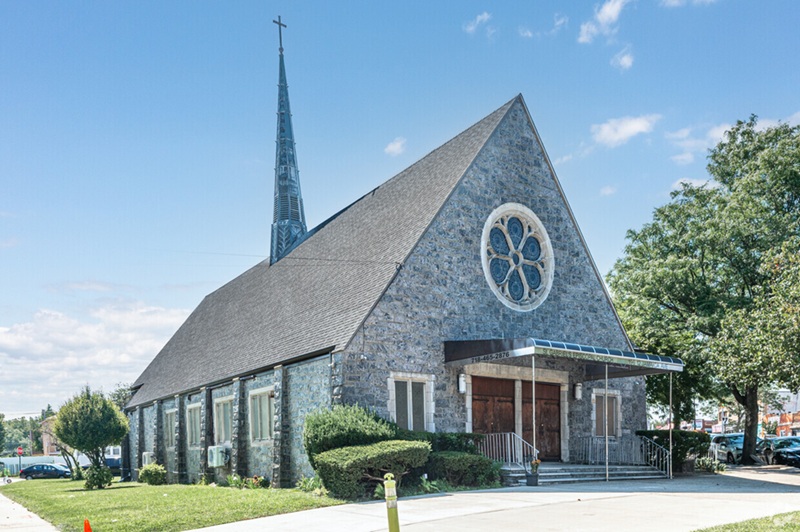
Ozone Park, located in the southwestern section of Queens, New York, is a vibrant and dynamic neighborhood known for its rich cultural diversity, suburban charm, and proximity to major transportation routes. The neighborhood’s unique name, which originates from the air quality improvement brought by the nearby Jamaica Bay and its marshlands, offers a hint to the area’s natural beauty.
History and Development
Ozone Park has a fascinating history that dates back to the early 20th century. It was originally developed as a suburban community in the early 1900s, drawing middle-class families seeking a quiet, residential area with easy access to Manhattan. The neighborhood’s growth accelerated after the construction of the Long Island Rail Road’s (LIRR) Rockaway Beach Branch and the opening of the Aqueduct Racetrack in 1894. The area flourished in the decades that followed, with single-family homes, row houses, and apartment buildings rising to meet the demands of an increasingly diverse population.
The neighborhood continued to expand with the development of the subway system in the 1930s, which connected Ozone Park to the rest of New York City. The introduction of public transit made the neighborhood more accessible, spurring further growth and residential development.
Cultural Diversity
One of Ozone Park’s defining features is its cultural diversity. Over the years, the neighborhood has become a melting pot of different ethnic groups, including Italian, Irish, Caribbean, and Latin American communities. In the past few decades, the Dominican, Puerto Rican, and Guyanese populations have grown significantly, bringing with them rich traditions, foods, and festivals that have shaped the local culture.
The diversity is evident in the neighborhood’s culinary offerings, with local restaurants serving authentic international cuisines, from Italian pizza parlors and delis to Caribbean bakeries and Dominican eateries. Residents celebrate their cultural heritage through events such as parades, festivals, and local gatherings, further enriching the community’s vibrant atmosphere.
Landmarks and Attractions
Ozone Park offers a variety of landmarks and attractions that reflect its history and culture. Perhaps the most well-known is the Aqueduct Racetrack, a thoroughbred horse racing venue that has been a major part of Ozone Park since the late 19th century. The racetrack hosts a variety of events, including the popular Cigar Mile Handicap, attracting racing fans from all over the city.
The Jamaica Bay Wildlife Refuge is another important natural landmark located nearby, offering residents and visitors a chance to escape the urban hustle and enjoy birdwatching, hiking, and other outdoor activities. The park, part of the Gateway National Recreation Area, is home to more than 330 species of birds, making it a haven for wildlife enthusiasts.
Transportation and Accessibility
Ozone Park benefits from a strategic location with access to several key transportation hubs, making it easy to travel to other parts of Queens, Brooklyn, and Manhattan. The A subway line, which runs through the neighborhood, connects Ozone Park directly to lower Manhattan and other parts of the city. Additionally, the Long Island Rail Road (LIRR) provides convenient access to destinations along Long Island.
The neighborhood is also well-served by major highways, including the Van Wyck Expressway and Rockaway Boulevard, which provide quick access to both JFK Airport and the rest of New York City.
Education and Community Life
The educational landscape in Ozone Park is diverse, with public schools serving the neighborhood’s children alongside several private institutions. Families have access to a range of educational options, from elementary schools to high schools, which cater to the needs of the local community.
Ozone Park also boasts a strong sense of community, with residents actively participating in neighborhood associations, local events, and recreational activities. The neighborhood is home to several parks and sports facilities, providing spaces for families and individuals to enjoy outdoor activities.
Real Estate and Housing Trends
Real estate in Ozone Park has seen significant changes in recent years. While much of the neighborhood consists of single-family homes, there has been an increasing demand for multifamily housing and modern apartment buildings. This development trend is driven by the area’s proximity to major transportation routes, affordable housing options compared to other parts of Queens, and the growing population of young professionals and families seeking to establish roots in the area.
As the neighborhood continues to evolve, many older homes have been renovated or replaced with new constructions, contributing to the changing aesthetic of the area. However, despite these transformations, Ozone Park has managed to retain much of its suburban feel, offering a quieter lifestyle with easy access to the heart of New York City.
Conclusion
Ozone Park is a dynamic neighborhood with a rich cultural tapestry, strong community ties, and a strategic location that makes it an attractive place to live, work, and visit. With its diverse population, historic landmarks, and ongoing development, Ozone Park offers a unique glimpse into the evolving story of New York City. Whether you’re drawn to its lively cultural scene, natural beauty, or convenient transportation options, Ozone Park is a place where residents and visitors alike can enjoy a variety of experiences, all while being just a short subway ride away from the bustling heart of the city.

